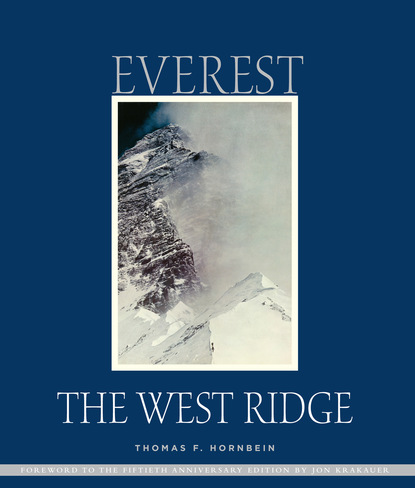a bit more of the dream died.
In the summer of 1960 Nick Clinch invited me to come along to be the climbing doctor for the American–Pakistan Karakoram Expedition to Masherbrum, a beautiful mountain standing icily alone and aloof 25,660 feet high, at the head of the Hushe Valley. The peak had been tried three times before and proved to be properly seasoned with difficulty and danger. We climbed it, and that I failed to reach the summit seemed hardly to matter for I had worked hard; our success was mine, and the depth of companionship would be hard to equal. I had tasted the best there was. The dream of Everest became even less important.
But in May 1961, a postcard came to my home in St. Louis from Norman Dyhrenfurth, saying: “Perhaps you have read that Nepal gave me permission for Everest–Lhotse–Nuptse in 1963? During discussions your name was brought up. If the project interests you, how about mailing me a snapshot, a brief biography and a climbing record? Do let me hear from you.”
Everest. The old distant longings stirred. It might be fun, I thought, especially if George Bell and Dick Emerson and Willi Unsoeld were to go. I didn’t need to go, for Masherbrum had quenched my thirst. But a chance to see the highest point on earth? I doubted that the money could ever be raised. But I might as well say I was interested and see what developed.
On May 13 I replied: “Yes, the project ‘interests’ me considerably. It is too soon to be sure of availability, though I would guess the chances are excellent. Incidentally, I have been fiddling with one of the Swiss oxygen masks in the lab and believe it can be improved to perform much more efficiently. If you’re interested, I shall be happy to give you details when the tests are completed.”
This brought an airmail letter in response: “Your letter of May 13, was welcome news, indeed. We have decided on a total of fifteen men, fourteen of whom are able to go ‘high.’ As to the question of oxygen, I agree that the equipment could stand some improvements. If it is O.K. with you, I would like to put you in charge of oxygen equipment from here on in.”
During the next eighteen months the Expedition ripened to solvent reality under Norman’s imaginative guidance. On February 3, 1963, we were on our way. I sat, seat belt fastened, heavy with an emptiness, and began a letter to my wife, who stood a hundred yards away inside the terminal.
My pen paused as loneliness and doubt overwhelmed me. I wanted to get off the plane and walk those hundred yards and forget this nonsense. But I couldn’t—and live with myself. As suddenly as it had welled up, the feeling subsided, but the pain lingered, perhaps to intensify by contrast the pleasure I knew would come. Parting from Gene, I felt the bond of years tug stronger than it ever had before; paradoxically, the feeling diminished loneliness.
A restless urge to come to grips with the mountain, and myself, pulled me on. After three years of civilized living I needed proof of my ability to tolerate such an environment once again, and I needed time for introspection to try to understand an urge that mixed so much sadness with expectancy. I felt strangely assured that I would get to the top. This arose from something intangible, beyond just prior knowledge of what Everest was like. But looked at objectively, clearly, my confidence was irrational. Weather could affect the success of the entire undertaking; my own health and performance at thirty-two might turn out poor compared to what it was in 1960; I might not be in the right place at the right time; and there were eighteen others, of impressive stature physically and presumably of equal motivation. All these reasons made my hopes unrealistic, but the dream was fully alive now and it wouldn’t let go.
Brothers in Kathmandu (Photo by James Lester)
Cattle and terraces near Yersa (Photo by James Lester)
Himalaya in the India–Nepal–Tibet border area (from Faith 7 spacecraft, orbit 9, 30N, 79E, altitude 100 miles) (Photo by L. Gordon Cooper)
West Ridge and South Col routes above Camp 2—Advanced Base Camp (Map by Dee Molenaar)
The camp at Chaubas, evening (Photo by Al Auten)
Конец ознакомительного фрагмента.
Текст предоставлен ООО «ЛитРес».
Прочитайте эту книгу целиком, купив полную легальную версию на ЛитРес.
Безопасно оплатить книгу можно банковской картой Visa, MasterCard, Maestro, со счета мобильного телефона, с платежного терминала, в салоне МТС или Связной, через PayPal, WebMoney, Яндекс.Деньги, QIWI Кошелек, бонусными картами или другим удобным Вам способом.
